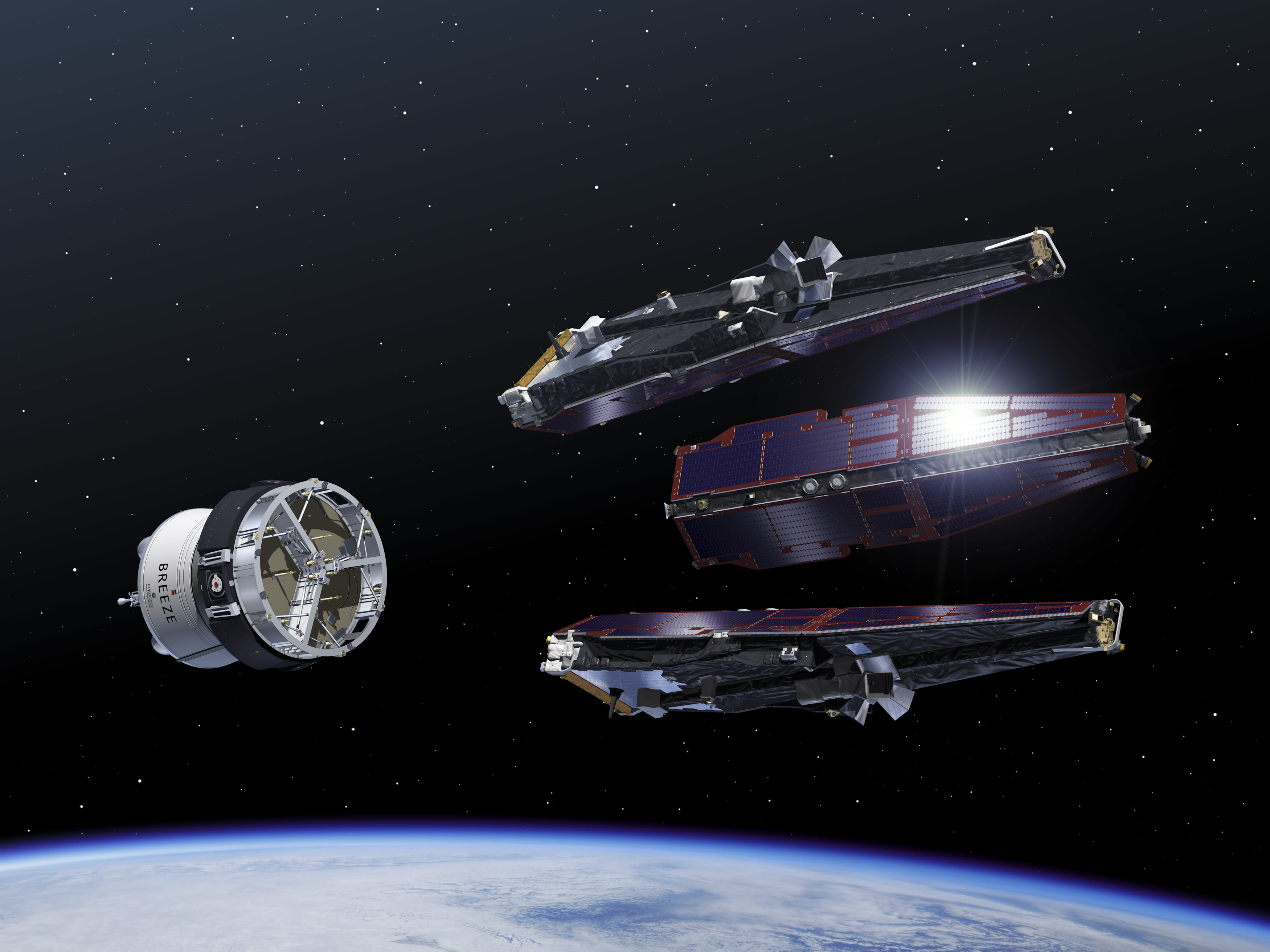The number of protons defines an element, but the number of neutrons can vary. We call these different flavors of an element isotopes, and use these isotopes to solve some challenging mysteries in physics and astronomy. Some isotopes occur naturally, and others need to be made in nuclear reactors and particle accelerators.
Elon Musk Briefs Universe Today & Media ahead of Revolutionary Falcon 9 Blastoff
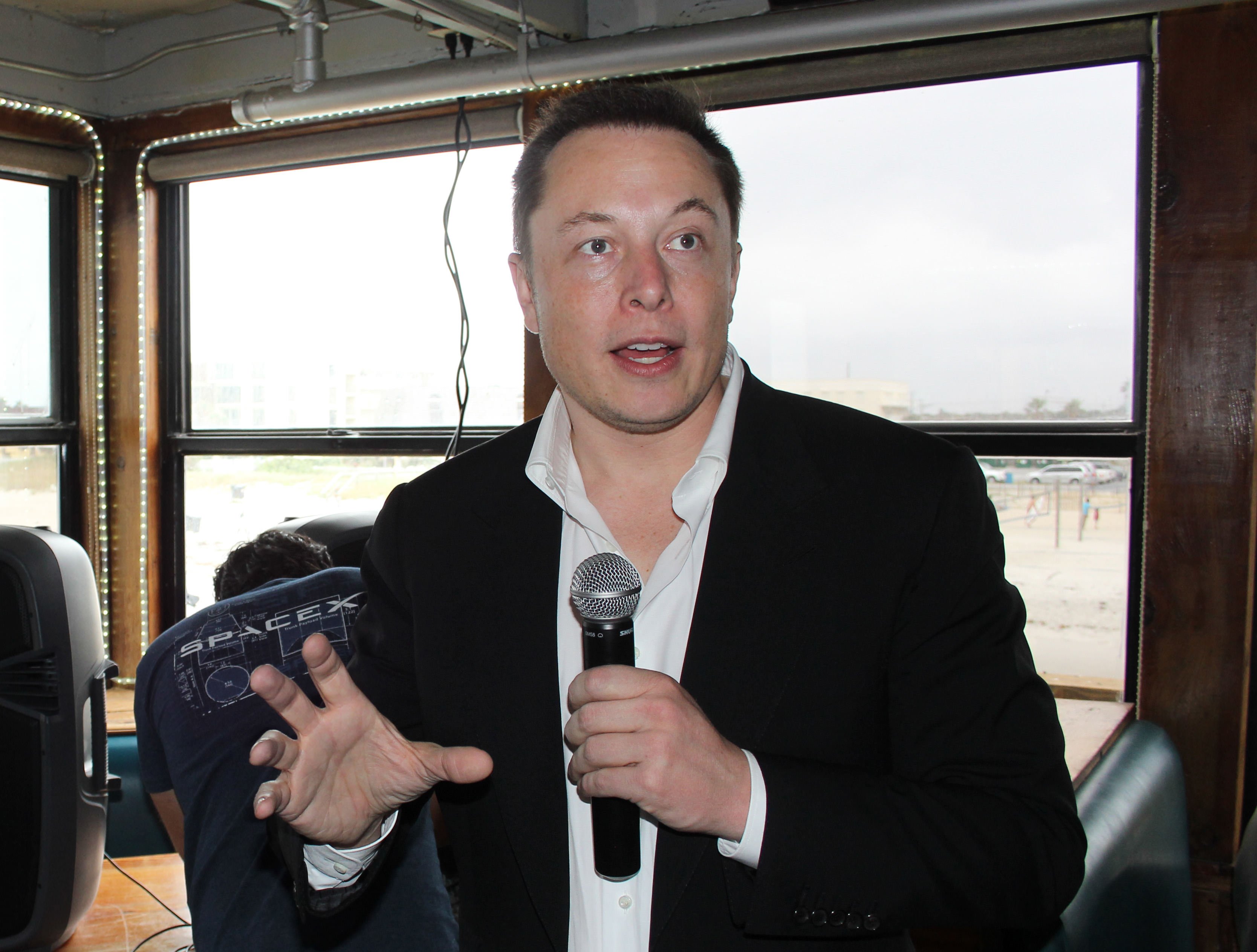
SpaceX founder and CEO Elon Musk briefs reporters including Universe Today on Sunday (Nov. 24) in Cocoa Beach, FL prior to planned SpaceX Falcon 9 rocket blastoff with SES-8 communications satellite set for Nov. 25, 2013 from Cape Canaveral, FL. Credit: Ken Kremer/kenkremer.com
See live SpaceX webcast link below[/caption]
CAPE CANAVERAL, FL – A new space era potentially dawns today, Nov. 25, with the planned maiden launch of the next generation SpaceX Falcon 9 commercial rocket from Cape Canaveral, FL, that could completely revolutionize how we access the high frontier and “rock the space industry to its core” by cutting cost and production times – if all goes well.
Just a day before liftoff, SpaceX founder and CEO Elon Musk personally briefed reporters including Universe Today on Sunday (Nov. 24) in Cocoa Beach, FL, nearby the firms Cape Canaveral launch facility about today’s (Nov. 25) upcoming maiden launch of the companies upgraded Falcon 9 rocket, saying it was “very important” for the future.
“This launch is very important to the future of SpaceX. This is our toughest mission yet!” said Musk to a small group of reporters, including the author, gathered for Sunday’s exclusive pre-launch briefing.
“Whether or not this launch is successful, I’m confident we will certainly make it on some subsequent launch,” said Musk at the Cocoa Beach meeting with the media.
The Falcon 9 liftoff from Launch Complex 40 at Cape Canaveral, FL is scheduled for 5:37pm EST and will be webcast live by SpaceX for viewing at; www.spacex.com/webcast
Today’s (Nov. 25) inaugural blastoff of the privately developed Falcon 9 rocket with the commercial SES-8 HDTV and telecommunications satellite is especially noteworthy because it also features SpaceX’s first ever launch of any satellite to a Geostationary Transfer Orbit (GTO).
From the start, SpaceX designed the Falcon 9 rocket from a clean sheet aimed at radically reducing production and manufacturing costs and assembly times and thereby offer significantly lower launch price, says Musk.
“I don’t want to tempt fate, but I think it’s going to have a pretty significant impact on the world launch market and on the launch industry because our prices are the most competitive of any in the world,” Musk stated.
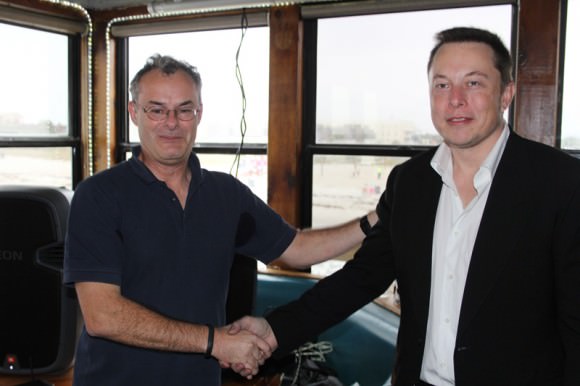
SES-8 also represents SpaceX’s first launch of a Falcon 9 carrying a commercial satellite to space from the Florida Space Coast.
“This is really rocking the industry. Everybody has to look out,” said Martin Halliwell, SES chief technical officer, who joined Musk at Sunday’s meeting.
The 3,138 kg (6,918 lbs) SES-8 satellite is a hybrid Ku- and Ka-band spacecraft that will provide TV and communications coverage for the South Asia and Asia Pacific regions.
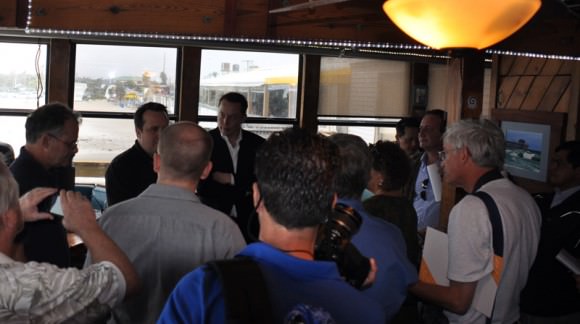
The SES-8 spacecrft was built by Orbital Sciences Corp and will be lofted to a 295 x 80,000 km geosynchronous transfer orbit inclined 20.75 degrees.
SpaceX has signed nearly 50 commercial and government launch contracts and thus already sports a very crowded launch manifest ahead of today’s Falcon 9 launch.
All five launches of SpaceX’s Falcon 9 rocket from Space Launch Complex 40 at Cape Canaveral Air Force Station were either test launches or flights to the International Space Station, under contract to NASA.
The five Falcon 9 launches to date from the Florida Space Coast also featured the original, less powerful and shorter version of the booster and has a 100% success rate.
This mighty new version of the Falcon 9 dubbed v1.1 is powered by a cluster of nine of SpaceX’s new Merlin 1D engines that are about 50% more powerful compared to the standard Merlin 1C engines. The nine Merlin 1D engines 1.3 million pounds of thrust at sea level that rises to 1.5 million pounds as the rocket climbs to orbit.
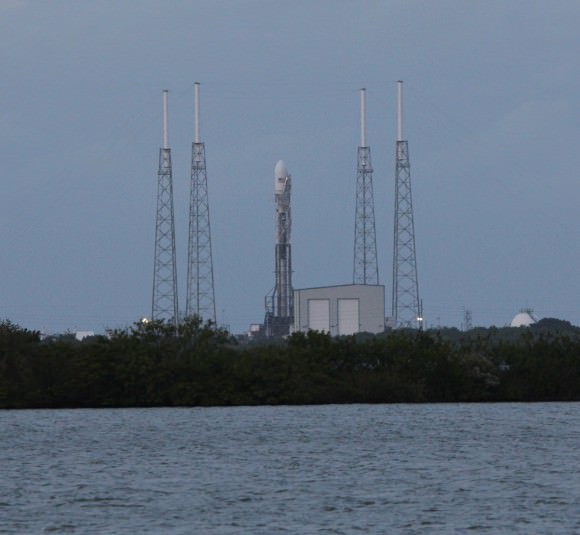
Therefore the upgraded Falcon 9 can boost a much heavier cargo load to the ISS, low Earth orbit, geostationary orbit and beyond.
The next generation Falcon 9 is a monster. It measures 224 feet tall and is 12 feet in diameter. That compares to 13 stories for the original Falcon 9.
The payload fairing for SES-8 is 17 feet in diameter.
The Falcon 9/SES-8 launch window extends for 66 minutes until 6:43 p.m. EST.
Weather outlook is 80% favorable at this time.
SpaceX is planning a live webcast of the launch with commentary from SpaceX corporate headquarters in Hawthorne, CA.
The broadcast will begin at approximately 5:00 p.m. EDT and include detailed discussions about the Falcon 9 rocket, launch and flight sequences as well as about the SES-8 satellite.
Stay tuned here for continuing SpaceX & MAVEN news and Ken’s SpaceX launch reports from on site at Cape Canaveral & the Kennedy Space Center press site.
…………….
Learn more about SpaceX, LADEE, MAVEN, MOM, Mars rovers, Orion and more at Ken’s upcoming presentations
Nov 22-25: “SpaceX launch, MAVEN Mars Launch and Curiosity Explores Mars, Orion and NASA’s Future”, Kennedy Space Center Quality Inn, Titusville, FL, 8 PM
Dec 11: “Curiosity, MAVEN and the Search for Life on Mars”, “LADEE & Antares ISS Launches from Virginia”, Rittenhouse Astronomical Society, Franklin Institute, Phila, PA, 8 PM
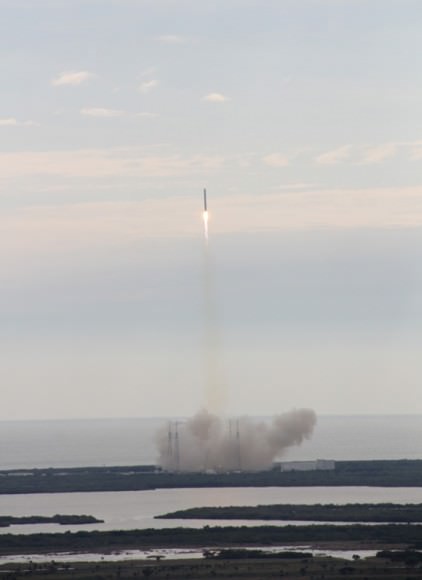
Are There More Grains of Sand Than Stars?
This question comes from Sheldon Grimshaw. “I’ve heard that there are more stars in our Universe than there are grains of sand on all the beaches on Earth. Is this possible?” Awesome question, and a great excuse to do some math.
As we learned in a previous video, there are 100 to 400 billion stars in the Milky Way and more than 100 billion galaxies in the Universe – maybe as many as 500 billion. If you multiply stars by galaxies, at the low end, you get 10 billion billion stars, or 10 sextillion stars in the Universe – a 1 followed by 22 zeros. At the high end, it’s 200 sextillion.
These are mind bogglingly huge numbers. How do they compare to the number of grains of sand on the collective beaches of an entire planet? This type of sand measures about a half millimeter across.
You could put 20 grains of sand packed in side-by-side to make a centimeter. 8000 grains in one cubic centimeter. If you took 10 sextillion grains of sand, put them into a ball, it would have a radius of 10.6 kilometers. And for the high end of our estimate, 200 sextillion, it would be 72 kilometers across. If we had a sphere bigger than the Earth, it would be an easy answer, but no such luck. This might be close.
So, is there that much sand on all the beaches, everywhere, on this planet? You’d need to estimate the average volume of a sandy beach and the average amount of the world’s coastlines which are beaches.
I’m going to follow the estimates and calculations made by Dr. Jason Marshall, aka, the Math Dude. According to Jason, there about 700 trillion cubic meters of beach of Earth, and that works out to around 5 sextillion grains of sand.
Jason reminds us that his math is a rough estimate, and he could be off by a factor of 2 either way. So it could be 2.5 sextillion or there could be 10 sextillion grains of sand on all the world’s beaches.
So, if the low end estimate for the number of stars matches the high end estimate for the number of grains of sand, it’s the same. But more likely, there are 5 to 10 times more stars than there are grains of sand on all the world’s beaches.
So, there’s your answer, Sheldon. For some “back of the napkin” math we can guess that there are more stars in our Universe than there are grains of sand on all the beaches of Earth.
Oh, one more thing. Instead of grains of sand, what about atoms? How big is 10 sextillion atoms? How huge would something with that massive quantity of anything be? Pretty gigantic. Well, relatively at least. 10 sextillion of anything does sound like a whole lot.
If you were to make a pile of that many atoms… guess how big it would be. It’d be about…. (gesture big then gesture small) 4 times smaller than a dust mite. Which means, a single grain of sand has more atoms than there are stars in the Universe.
‘Will We Soon Find Ourselves Back In The Stone Age?’ Why Swarm Is Watching Our Magnetic Field
A satellite triplet was born last week. The European Space Agency’s Swarm constellation flew into space on Friday (Nov. 22) on a quest to understand more about the Earth’s magnetic field.
Around the same time, ESA put out a few videos explaining why the magnetic field is important. This one explains that the magnetic field has weakened over the past few years, while the north pole has shifted direction. “In fact, a whole pole reversal is possible,” the narrator says. “It happened last 780,000 years ago at the very beginning of human history. But cavemen didn’t have mobile phone networks, GPS networks or power supplies.”
If a reversal did happen, it could affect those systems, the video adds, asking “Will we soon find ourselves back in the stone age?”
In the short term, however, the focus is on Swarm’s science. The satellites successfully unfurled their booms on Saturday (Nov. 23) and are now starting three months of commissioning before their planned four-year mission.
Once they get going, the satellites will make observations from two altitudes — a pair at about 285 miles (460 kilometers) in altitude and the final of the trio at a higher altitude of 330 miles (530 kilometers). They will monitor any changes in the Earth’s magnetic field, looking at spots ranging from the core of our planet to areas of the upper atmosphere.
Check out this ESA web page for more information about the mission.
Guide to Safely Viewing Comet ISON on Perihelion Day, November 28
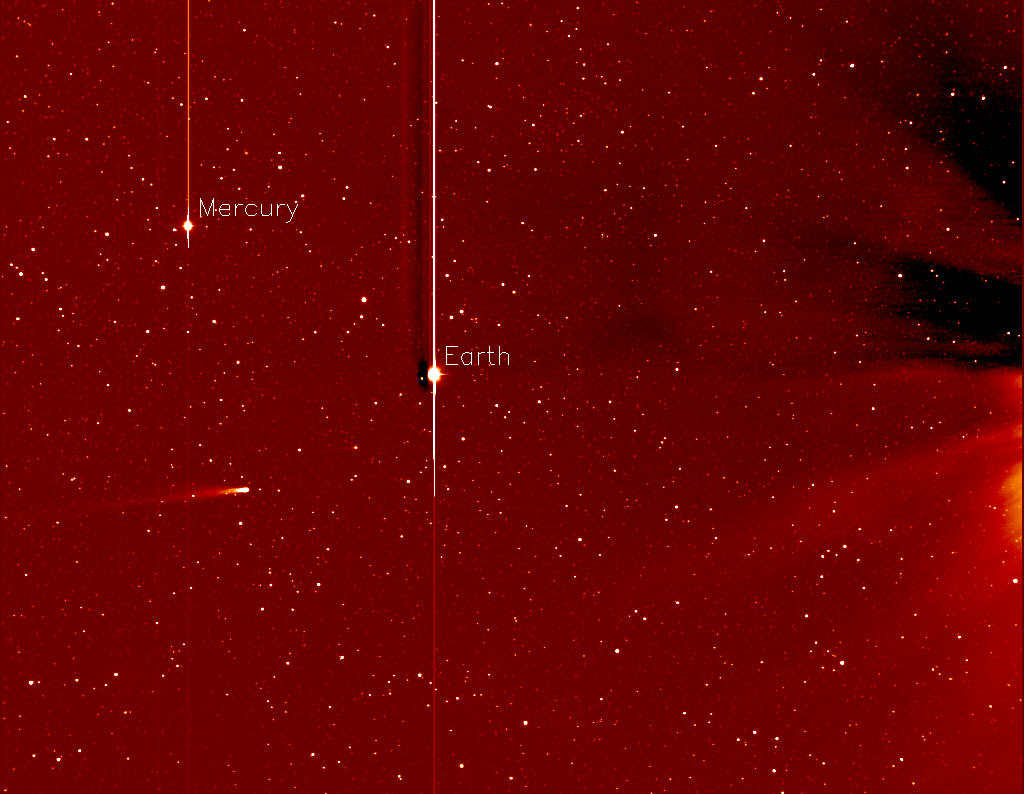
The day of truth is fast approaching. Will Comet ISON’s sungrazing ways spark it to brilliance or break it to bits? How bright will the comet become? Studying the latest images from NASA’s STEREO Ahead sun-watching spacecraft, it’s obvious that ISON remains healthy and intact. The most recent pictures taken from the ground confirm that no major breakup has occurred. Assuming that ISON doesn’t crumble apart on Nov. 28, when it passes just 730,000 miles (1.2 million km) from the sun, it could brighten to -4 magnitude or better in the hours leading up to and after the moment of perihelion at 12:24:57 p.m. CST (18:24:57 UT).
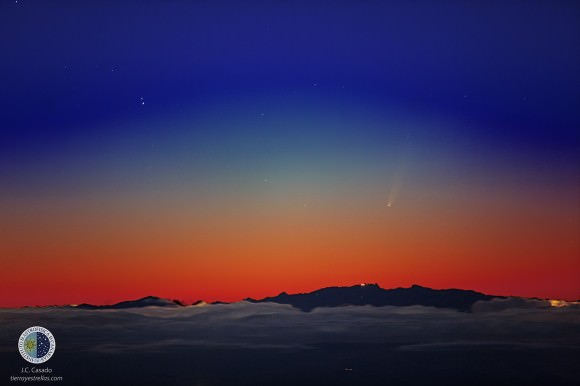
For comparison, the planet Venus hovers around -4 magnitude and is routinely visible visible with the naked eye in broad daylight if you know exactly where to look. For the sake of establishing a baseline, let’s imagine that ISON will match Venus in magnitude during its crack-the-whip fling around the sun. Naturally, this would put the comet within range of naked eye visibility smack in the middle of the day. Well, maybe. ISON presents us with a little problem. While it may grow bright enough to view in daylight, it will be very close to the sun on perihelion day. Not only will it be difficult to tease from the solar glare, but with the sun only a degree or two away, there’s a real danger you could damage your eyes if you stray too close.
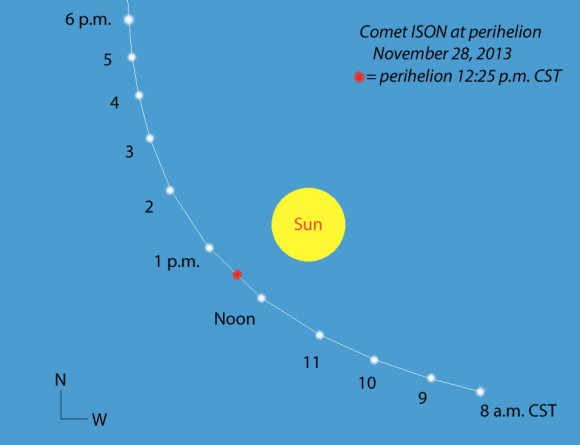
During the early morning hours of the 28th, ISON will lie approximately 2.5 degrees from the sun’s limb or edge. At the time of perihelion that separation narrows to less than 1/2 degree or one solar diameter. This is likely when the comet will shine brightest, but with the sun so close, it will be next to impossible to spot it with naked eye or binoculars at that time. Matter of fact, don’t even try – it’s not worth the risk of damaging your retinas. An expert observer with a carefully-aimed telescope might pick it up, but must use extreme caution that sunlight not enter the field of view. Come sunset, the distance widens again to a somewhat more comfortable 2.5 degrees.
Once, when following Venus as a crescent through inferior conjunction, I dared track it within 2.5 degrees of the sun. THAT was almost too close for comfort. I had to avert my vision from a brilliant wedge of internally reflected sunlight along one side of the view and wear sunglasses to temper the brilliance of the “safe zone” where Venus appeared.. Red and polarizing filters can help reduce glare and increase contrast for near-sun viewing of comets and planets.
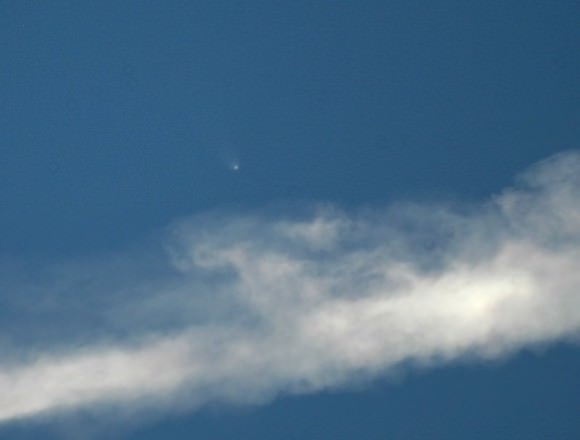
In mid-January 2007, Comet C/2006 P1 McNaught had a similar close brush with the sun and peaked around magnitude -5. For several days around perihelion on Jan. 12 it was plainly visible with the naked eye in broad daylight. I spotted it 5.6 degrees from the sun at magnitude -3.5 (twice as faint as Venus) at 10 a.m. on Jan. 13 and 5 degrees from the sun the following day when I estimated its magnitude at -4.5. While close, 5 degrees is a much more comfortable distance for comet and inner planet viewing.
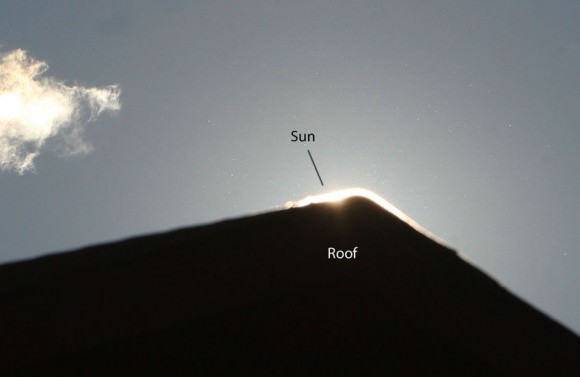
Whether naked eye, binocular or telescope, the favorite method for finding Comet McNaught in 2007 remains the best for Comet ISON in 2013. Block out the sun by placing something with a crisp edge in its way. Power poles, street lights (finally a good use for them), buildings, roof gables, church steeples and even clouds make ideal sun filters. They effectively remove the sun and allow you to look as close as is safe. Safety is critical here – never look directly at the sun. The damage to your retina will be swift and painless. No comet is worth losing your precious sense of sight.
As Earth rotates, the sun slowly moves across the sky. When using binoculars, if you start to see a bright reflection from approaching sunlight in the field of view, shift your position and re-cover the sun. I’ve been asked if you can simply hold an appropriate solar filter over your eye to dim the sun. Yes you can, but the filter will also completely block your view of the much, much fainter comet. Use the filter instead to dim the sun so you can hunt nearby for the comet.
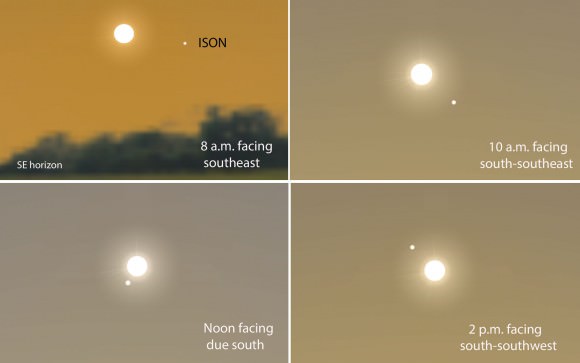
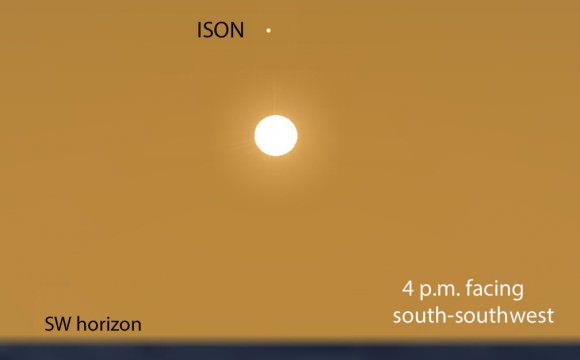
Since ISON will be 2.5 degrees from the sun in the early morning and again just before sunset, those might be the best times to find it. Compared to the hour or two around perihelion, the glare will be less though ISON will likely be a little fainter. You can use the diagram above, suitable for mid-northern latitudes, to know in what direction from the sun to look for the comet. If ISON becomes at least as bright as Venus and your sky is deep blue and haze-free, you might just see it on Thursday before sitting down to that Thanksgiving turkey dinner. But of course much depends upon the comet.
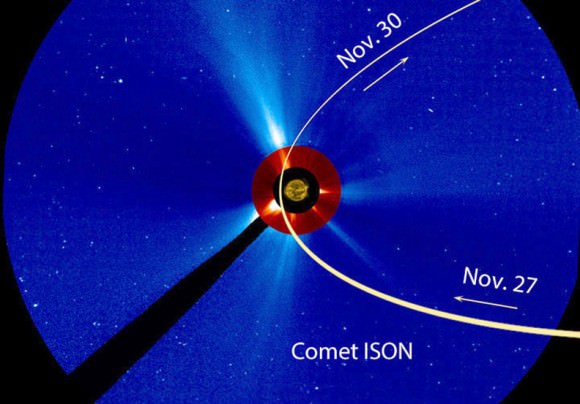
Don’t fret if it’s cloudy. Head over to the Solar and Heliospheric (SOHO) website. There you’ll have a ringside seat Nov. 27-30 as Comet ISON makes its death-defying turn around the sun. Thereafter it will appear risk-free in the morning sky with what we hope will be a beautiful tail.
Speedy Science: Here’s Four Years Of Herschel Telescope Work In A Short Video
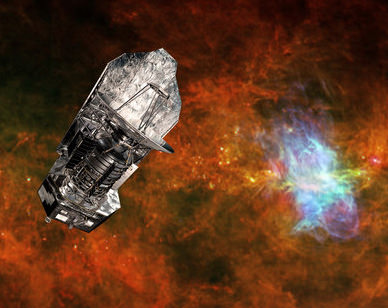
In just one minute, you can watch the Herschel space telescope painting the sky blue, green and yellow! The colors in this new video represent four years of observations from the European Space Agency telescope, which was active between 2009 and 2013.
“In total, Herschel observed almost a tenth of the entire sky for over 23,500 hours, providing new views into the previously hidden universe, pointing to unseen star birth and galaxy formation, and tracing water through the universe from molecular clouds to newborn stars and to their planet-forming discs and belts of comets,” ESA stated on a video explanation.
As ESA explains, Herschel had two cameras and imaging spectrometers on board, called PACS (Photoconductor Array Camera and Spectrometer, in blue) and SPIRE (Spectral and Photometric Imaging Receiver, in green). When they worked together, their observations are shown in yellow.
Herschel was officially shut down on June 17 — check out the video of those commands here — but the scientific information the telescope produced is still being plumbed by astronomers.
Source: ESA
Virtual Star Party – November 24, 2013: Comets and More!
Hosts: Fraser Cain, Scott Lewis
Astronomers: Bill McLaughlin, David Dickinson, Tom Nathe, Mike Phillips
Viewing: M103, Cocoon Nebula, Comet Lovejoy, more to come!
We hold the Virtual Star Party every Sunday night as a live Google+ Hangout on Air. We begin the show when it gets dark on the West Coast. If you want to get a notification, make sure you circle the Virtual Star Party on Google+. You can watch on our YouTube channel or here on Universe Today.
Maiden Next Gen SpaceX Falcon 9 launch from Cape Canaveral set for Nov. 25
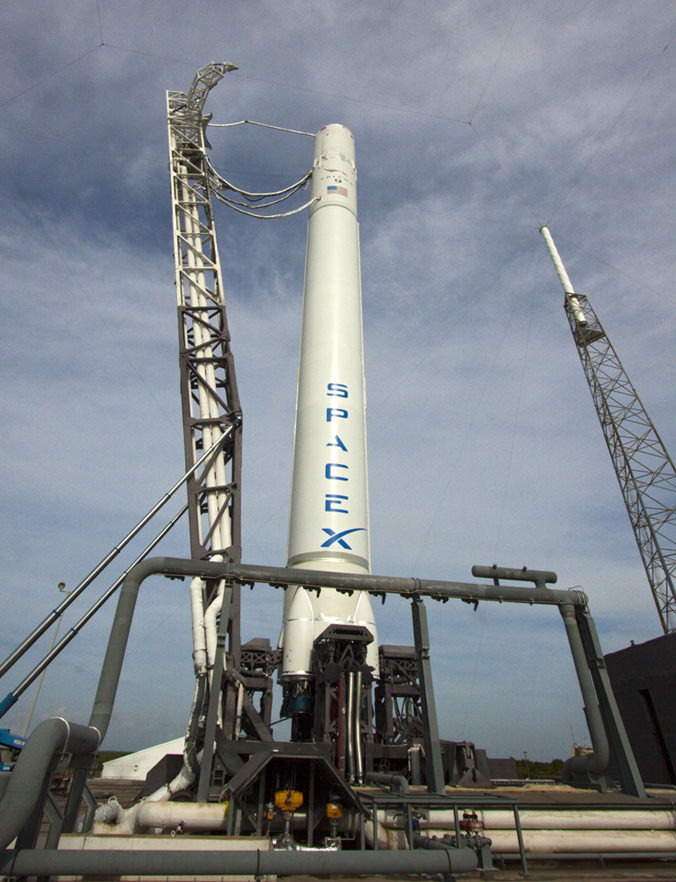
Falcon 9 during processing at Cape Canaveral Pad 40 ahead of launch scheduled for Nov. 25, 2013. Credit: SpaceX
See live SpaceX webcast link below[/caption]
CAPE CANAVERAL, FL – The maiden flight of the Next Generation commercial SpaceX Falcon 9 rocket from the firms Cape Canaveral launch facility is set to soar to space on Monday afternoon, Nov. 25 on a ground breaking mission that will be most difficult ever.
The upgraded Falcon 9 booster is slated to haul the commercial SES-8 telecommunications satellite for the satellite provider SES for SpaceX’s first ever payload delivery to a Geostationary Transfer Orbit (GTO).
Liftoff is scheduled for 5:37 p.m. EST from SpaceX’s Space Launch Complex 40 pad at Cape Canaveral Air Force Station.
Pad 40 is the same location as all prior SpaceX launches from the Florida Space Coast.
SpaceX CEO Elon Musk tweeted that this launch of the Falcon 9 will be the “toughest mission to date.”

This mighty new version of the Falcon 9 dubbed v1.1 is powered by a cluster of nine of SpaceX’s new Merlin 1D engines that are about 50% more powerful compared to the standard Merlin 1C engines. Therefore it can boost a much heavier cargo load to the ISS, low Earth orbit and beyond.
The next generation Falcon 9 is a monster. It’s much taller than a standard Falcon 9 – some 22 stories tall vs. 13 stories.
In anticipation of Monday’s planned liftoff, SpaceX engineers successful completed a wet dress rehearsal and engine hotfire test this past Thursday.
Spectators can view the launch from local public areas, beaches and roads – just as with any other liftoff.
The launch window extends just over an hour until 6:43 p.m. EST.
Weather outlook is 80% favorable at this time but deteriorates in case of a 1 day delay to Tuesday.

SpaceX is planning a live webcast of the launch with commentary from SpaceX corporate headquarters in Hawthorne, CA.
The broadcast will begin at approximately 5:00 p.m. EDT and include detailed discussions about the Falcon 9 rocket, launch and flight sequences as well as about the SES- 8 satellite.
The webcast can be viewed at; www.spacex.com/webcast
The first launch of this next generation Falcon 9 v 1.1 rocket occurred on Sept 29, 2013 on a demonstration test flight from a SpaceX pad at Vandenberg AFB carrying a Canadian weather satellite to an elliptical earth orbit.
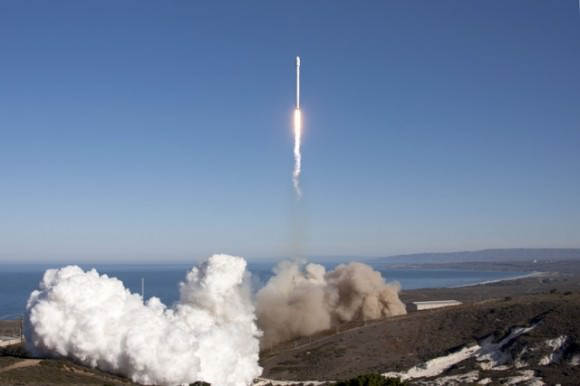
SES-8 is a hybrid Ku- and Ka-band spacecraft that will provide communications coverage for the South Asia and Asia Pacific regions.
It was built by Orbital Sciences spacecraft, weighs 3,138 kg (6,918 lbs) and will be lofted to a 295 x 80,000 km geosynchronous transfer orbit inclined 20.75 degrees.
Stay tuned here for continuing SpaceX & MAVEN news and Ken’s SpaceX launch reports from on site at Cape Canaveral & the Kennedy Space Center press site.
…………….
Learn more about SpaceX, LADEE, MAVEN, MOM, Mars rovers, Orion and more at Ken’s upcoming presentations
Nov 22-25: “SpaceX launch, MAVEN Mars Launch and Curiosity Explores Mars, Orion and NASA’s Future”, Kennedy Space Center Quality Inn, Titusville, FL, 8 PM
Dec 11: “Curiosity, MAVEN and the Search for Life on Mars”, “LADEE & Antares ISS Launches from Virginia”, Rittenhouse Astronomical Society, Franklin Institute, Phila, PA, 8 PM
NASA’s LADEE Probe Starts Science Study of Thin Lunar Atmosphere and Dusty Mystery
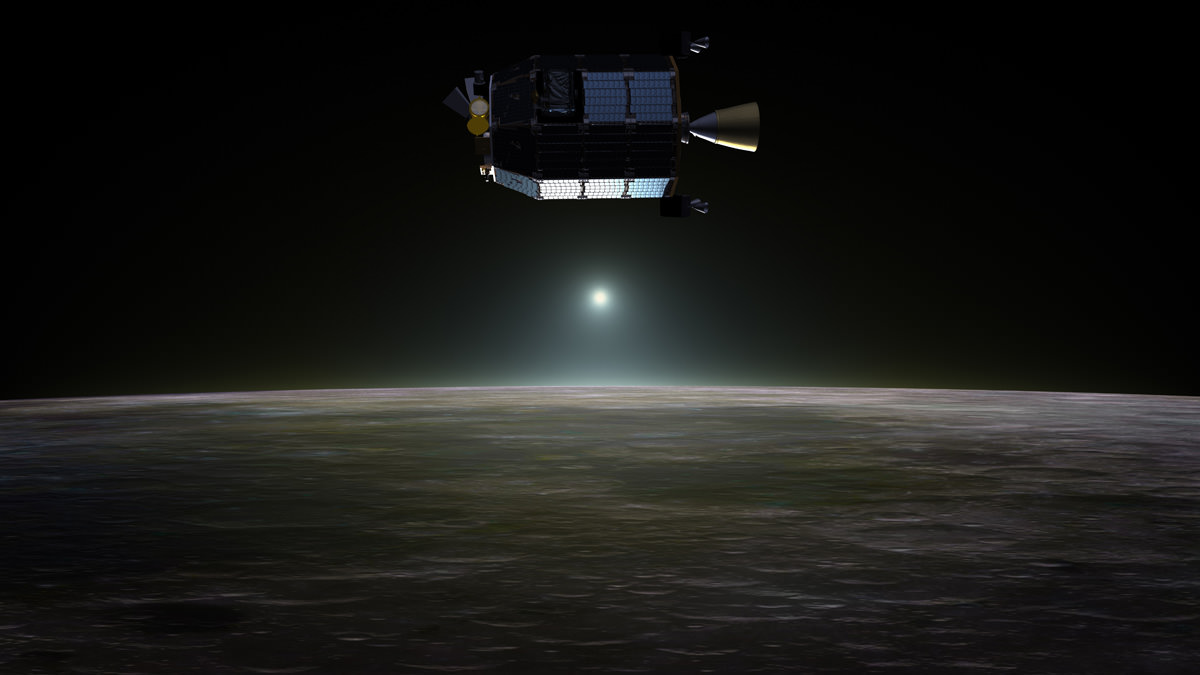
KENNEDY SPACE CENTER, FL – NASA’s Lunar Atmosphere and Dust Environment Explorer (LADEE) has descended to its planned low altitude orbit and begun capturing science data on its ground breaking mission to study the Moon’s ultra tenuous atmosphere and dust using a spacecraft based on a revolutionary new design aimed at speeding development and cutting costs.
LADEE set sail for Earth’s nearest neighbor during a spectacular night time launch atop the maiden flight of an Air Force Minotaur V rocket on Sept. 6 from NASA’s Wallops Island launch facility on Virginia’s Eastern shore.
The flawless launch thrilled spectators up and down virtually the entire US East coast region and yielded many memorable snapshots.
Following a month long voyage and three and a half long looping orbits of the Earth, LADEE successfully fired its main engine for 4 minutes and 12 seconds on Oct. 6 and successfully entered lunar orbit, Dawn McIntosh, LADEE deputy project manager at NASA Ames Research Center, told Universe Today in an exclusive interview.
A series of engine firings over the past month gradually circularized and lowered LADEE into its final science orbit around our Moon while engineers checked out the spacecraft during the commissioning phase of the mission.
The do or die initial Lunar Orbit Insertion burn (LOI-1) allowed LADEE to be captured into a highly elliptical, equatorial lunar orbit, said McIntosh.
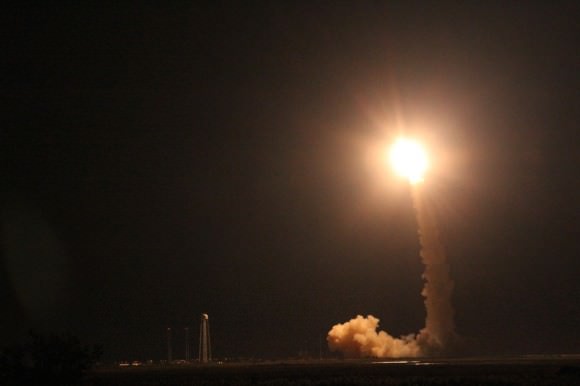
“Two additional LOI burns on Oct. 6 and Oct 9 lowered LADEE to an approximately 4 hour orbit with a periapsis altitude of 234 Kilometers (km) and apoapsis altitude of 250 km” McIntosh told me.
The trio of LOI main engine firings used up most of LADEE’s precious on board fuel.
“LADEE launched with 134.5 kilograms (kg) of fuel. Post LOI-3, 80% of our fuel has been consumed,” said McIntosh.
“Additional orbit-lowering maneuvers with the orbital control system (OCS) and reaction control system (RCS) of approximately 40 seconds were used to get LADEE into the science orbit.
The spacecraft finally entered its planned two hour science orbit around the moon’s equator on Nov. 20.
Its flying at an extremely low altitude ranging from merely eight to 37 miles (12-60 kilometers) above the moon’s surface.
By circling in this very low altitude equatorial orbit, the washing machine sized probe will make frequent passes crossing from lunar day to lunar night enabling it to precisely measure changes and processes occurring within the moon’s tenuous atmosphere while simultaneously sniffing for uplifted lunar dust in the lunar sky.
The remaining fuel will be used to maintain LADEE’s orbit during the approximately 100 day long science mission. The mission length is dictated by the residual fuel available for thruster firings.
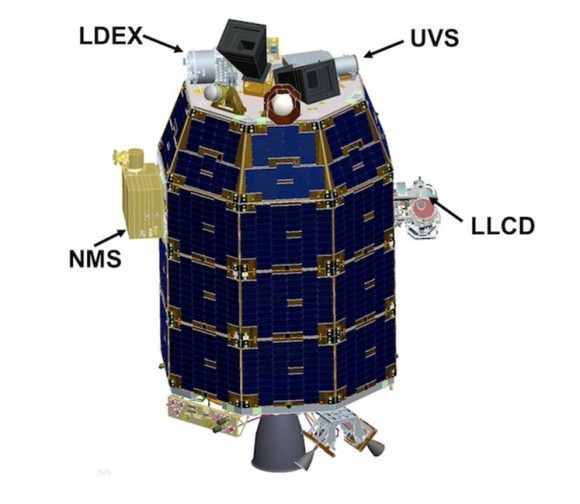
The purpose of LADEE is to collect data that will inform scientists in unprecedented detail about the ultra thin lunar atmosphere, environmental influences on lunar dust and conditions near the surface. In turn this will lead to a better understanding of other planetary bodies in our solar system and beyond.
“A thorough understanding of the characteristics of our lunar neighbor will help researchers understand other small bodies in the solar system, such as asteroids, Mercury, and the moons of outer planets,” said Sarah Noble, LADEE program scientist at NASA Headquarters in Washington.
By studying the raised dust, scientists also hope to solve a 40 year old mystery – Why did the Apollo astronauts and early unmanned landers see a glow of rays and streamers at the moon’s horizon stretching high into the lunar sky.
The $280 million probe is built on a revolutionary ‘modular common spacecraft bus’, or body, that could dramatically cut the cost of exploring space and also be utilized on space probes to explore a wide variety of inviting targets in the solar system.
“LADEE is the first in a new class of interplanetary exploration missions,” NASA Ames Director Worden told Universe Today. “It will study the pristine moon to study significant questions.”
“This is probably our last best chance to study the pristine Moon before there is a lot of human activity there changing things.”
The 844 pound (383 kg) robot explorer was assembled at NASA’s Ames Research Center, Moffett Field, Calif., and is a cooperative project with NASA Goddard Spaceflight Center in Maryland.
LADEE arrived at the Moon last month in the midst of the US government shutdown – which negatively impacted a host of other NASA missions. Only a ‘skeleton crew’ was available.
“All burns went super well,” Worden told me. And he is extremely proud of the entire team of “dedicated” professional men and women who made it possible during the shutdown.
“It says a lot about our people’s dedication and capability when a skeleton crew’ can get a new spacecraft into lunar orbit and fully commissioned in the face of a shutdown!” Worden said to Universe Today.
Now the real science begins for LADEE and the team.
Stay tuned here for continuing LADEE news
…………….
Learn more about LADEE, MAVEN, MOM, Mars rovers, Orion and more at Ken’s upcoming presentations
Nov 22-25: “SpaceX launch, MAVEN Mars Launch and Curiosity Explores Mars, Orion and NASA’s Future”, Kennedy Space Center Quality Inn, Titusville, FL, 8 PM
Dec 11: “Curiosity, MAVEN and the Search for Life on Mars”, “LADEE & Antares ISS Launches from Virginia”, Rittenhouse Astronomical Society, Franklin Institute, Phila, PA, 8 PM
Say Goodbye to Comet ISON (for now): Timelapse and Image Gallery
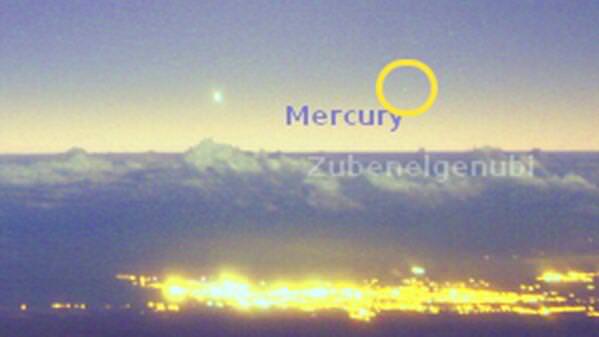
Comet ISON is heading towards its inexorable close pass of the Sun, which will occur on November 28, 2013. And while we’ve been enjoying great views from astrophotographers, that luxury is probably over as of today, as the comet is just getting to close to the Sun — and its blinding glare — for us to see it. But while we won’t be able to see it from Earth, we’re lucky to have a fleet of spacecraft that will be able to keep an eye on the comet for us! The STEREO spacecraft has already taken images of ISON hurtling towards the Sun; the Solar and Heliospheric Observatory (SOHO) will start observations on November 27. Then, the Solar Dynamics Observatory (SDO) will view the comet for a few hours during its closest approach to the Sun, and the X-Ray telescope on the Hinode spacecraft will view Comet ISON for about 55 minutes during perihelion.
Will Comet ISON survive its close pass and emerge brighter than ever? Only time will tell. You can keep track of what is going on with ISON here on Universe Today, as well as at NASA’s Comet ISON website, the Comet ISON Observing Campaign website, and there will be a special Hangout on Google+ during perihelion on Nov. 28.
Above is a gorgeous timelapse of ISON from the Teide observatory in the Canary Islands on Nov. 22nd, 2013. See more images and videos below.
Above is a screenshot from the live camera views from the Canada France Hawaii Telescope webcam. You can see a live view from their webcam any time at this link.
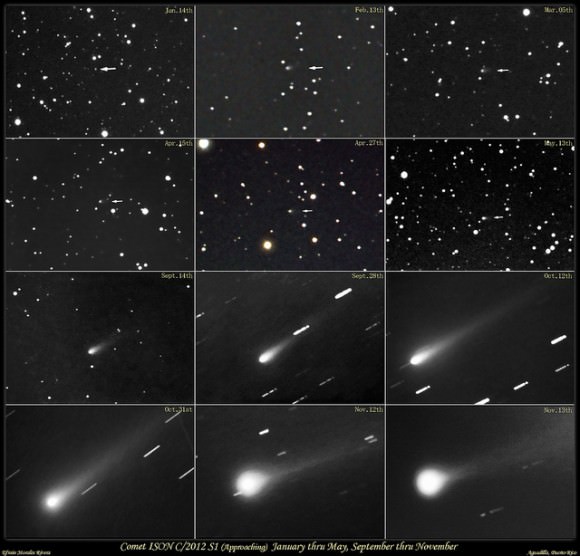
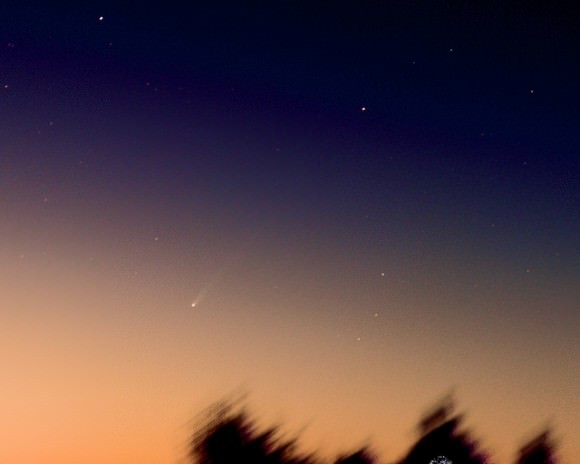
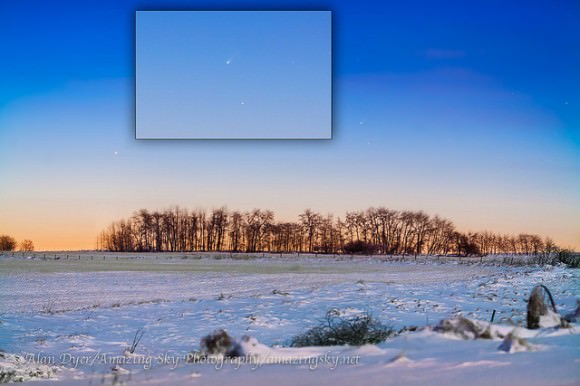
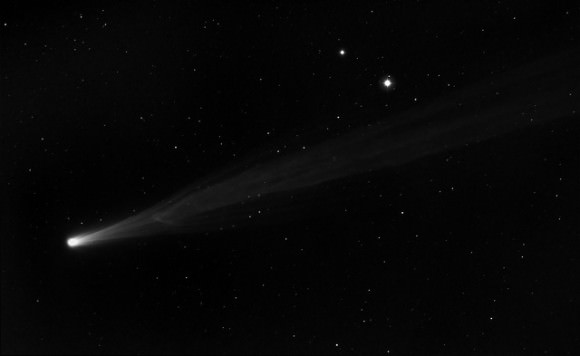
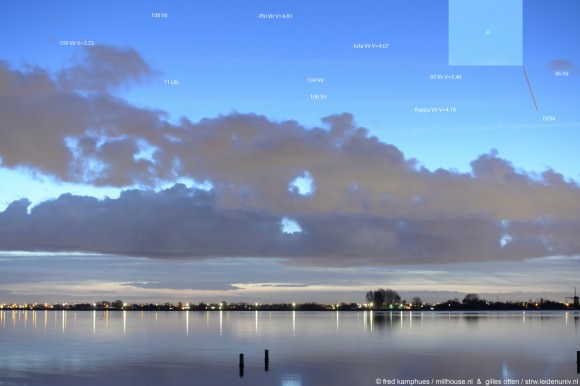
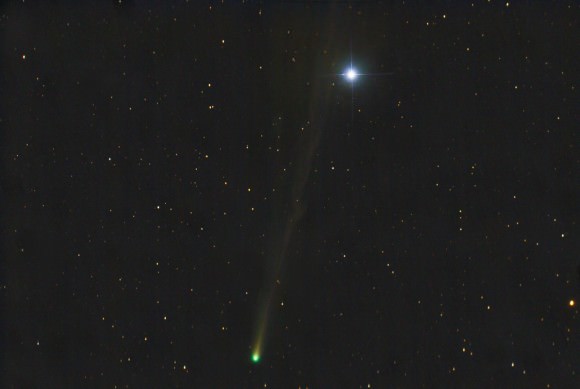
Want to get your astrophoto featured on Universe Today? Join our Flickr group or send us your images by email (this means you’re giving us permission to post them). Please explain what’s in the picture, when you took it, the equipment you used, etc.


